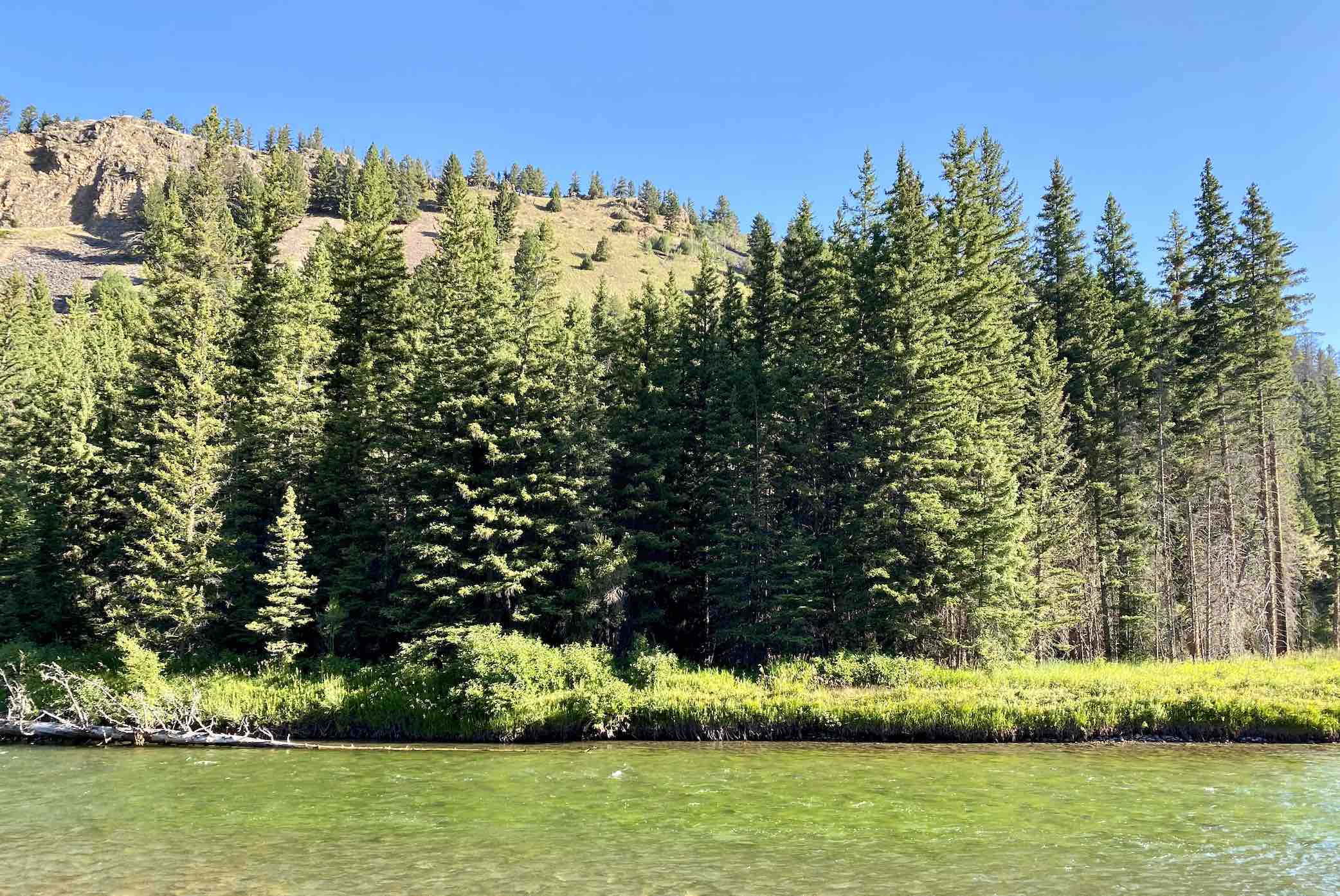By Gabrielle Gasser EBS Contributor
BIG SKY – This summer marks the second year of a three-year study on the algae bloom in the Gallatin River. It also signals another summer of extensive algae blooms fueled by high nutrient levels in the Gallatin.
The study began in 2018 after the filamentous algae bloom, which has been occurring naturally in the Gallatin River for years, worsened significantly. It’s being conducted by the Gallatin River Task Force in partnership with the Montana Department of Environmental Quality and complemented by data gathered by the Upper Missouri Waterkeeper, an organization focused on protecting and improving waterways in the Upper Missouri River Basin.
Kristin Gardner, executive director of the Gallatin River Task Force, said the three-year study will collect algae, water chemistry, streamflow and temperature data at multiple sites along the Upper Gallatin River.
“We are hoping to learn the drivers of algae growth in the Upper Gallatin so we can develop and prioritize projects that address these drivers,” Gardner said.
While the exact cause of the increased bloom has not been completely identified, unnatural nutrient loading of nitrogen and phosphorus in the water contributes to the growth, according to Guy Alsentzer the executive director of Upper Missouri Waterkeeper. Nitrogen and phosphorus are naturally occurring and necessary at normal levels, however too many of these nutrients can throw the water chemistry off balance.
Alsentzer said one contributor to the algae bloom is a human one. “At this point, the experts unequivocally are saying we have a lot of manmade, unnatural nutrient pollution coming from a variety of different sources in Big Sky,” he said, “and all of those different types of pollution can be the causal agent that gives rise to algae blooms.”
This summer the bloom arrived in late July and has lasted into September, Gardner said. The bloom has been observed on the mainstem Gallatin River from Portal Creek to the northern border of Yellowstone National Park, the lower West Fork of the Gallatin and the lower South Fork of the West Fork of the Gallatin.
“In 2018 we also saw significant algae upstream into Yellowstone National Park,” Gardner said, “but we did not collect or receive data from that section this year.”
The spread of the algae is concerning and also puzzling to David Tucker, communications manager at GRTF. The areas downstream of Big Sky where the growth is prolific can be partially attributed to the nutrient loading caused by human activity. However, the growth upstream of Big Sky complicates things since there hasn’t been similar land-use change in that drainage which would have caused the uptick in growth in 2018, Tucker said.
Along with nutrient loading, other conditions contribute to the bloom as well. Summer sun, warmer water temperatures and lower flows in the river also contribute to more growth. And while human activity is not the only cause of these blooms, it certainly accelerates the growth. Alsentzer compared the process to a firearm. “Nutrients are the bullets that go in the gun,” he said. “What pulls the trigger are the random natural conditions that we have no control over.”
So, he says, humans need to stop providing the ammo.
A main focus of the current water-quality study is to identify where the nutrients are loading in the Gallatin and to find solutions to mitigate that loading. Part of the solution will be a forthcoming Nutrient Reduction Plan published by the GRTF this fall. Another solution will be the upgraded wastewater treatment plant in Big Sky which will begin construction in the spring of 2021.
In addition to the plan, Gardner said GRTF will engage with the Big Sky community in a number of ways. “That will include … reaching out to potential project partners to gauge their interest in working together on a project; advocating for projects that others could lead that is outside of our capacity or expertise; outreach to residents and landowners on ways they can participate and make a difference; and engaging within and outside of our community to solicit potential project funding,” she said.
While the study still has another year to go, solutions have already been identified and GRTF is working to implement them through their plan and community engagement.
Alsentzer said the algae bloom is reaching a “tipping point” after three consecutive years of high nutrient levels.
“It’s time for everyone who cares about the Gallatin to come together and say ‘we need to identify those sources of pollution and we need to have transparent metrics for reducing them,’” he said. “It can’t be a voluntary effort anymore. We need to make sure everyone is on the same page and do it. So let’s put pen to paper and make it happen.”













